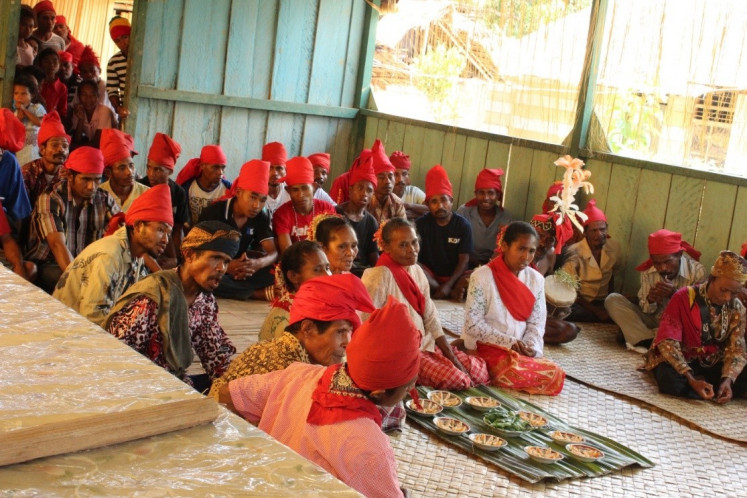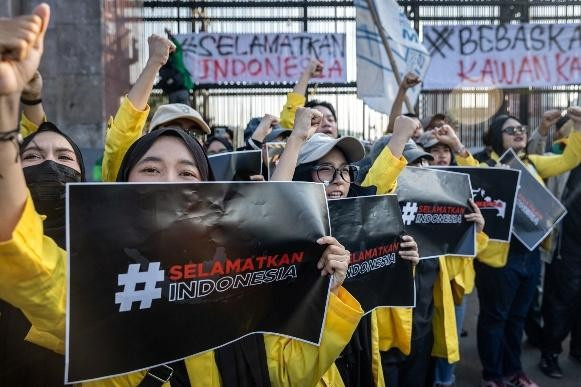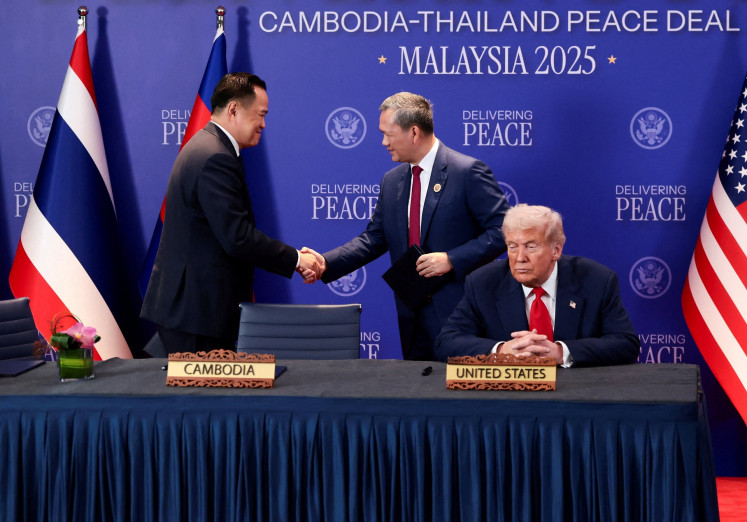Popular Reads
Top Results
Can't find what you're looking for?
View all search resultsPopular Reads
Top Results
Can't find what you're looking for?
View all search resultsHow Trump’s tariffs could hit developing economies
Our simulations confirm what economists have been asserting for years: Trade wars do not have winners.
Change text size
Gift Premium Articles
to Anyone
T
he world has witnessed a resurgence of protectionism since Donald Trump returned to the White House. So-called “reciprocal” tariffs, imposed on all United States trading partners at varying degrees based on the tax they charge on American goods, have been one of the hallmark features of Trump’s economic policy. They aim to correct what he perceives as “unfair” trade practices.
In early April, Trump said many countries had “ripped us off left and right” and declared “now it’s our turn to do the ripping”. His administration swiftly imposed sweeping tariff increases, with some of the highest rates falling on poorer countries like Laos and Lesotho.
A 90-day suspension was eventually made for most of these tariffs, and Trump has now softened duties on imported cars and car parts. But the danger remains high. No one can be certain that the initial reciprocal tariffs will not be reinstated.
Developing countries, many of which rely heavily on the export of manufactured goods to the US, will be keeping a keen eye on what happens next.
We employed the Global Trade Analysis Project model to analyze the possible effects of US tariffs on trade and economic growth. The model captures interactions and feedback among economic agents (households, firms and governments), markets, sectors and regions in the world economy.
It can be used to forecast the effect of trade reforms on various indicators such as production, welfare, income, prices and trade flows. Based on certain assumptions, the changes are likely to be seen in between two and three years.
We used simulations to compute the effects of Trump’s tariff regime under two alternative scenarios. In the first, which reflects the global trade situation at the time of writing, baseline tariffs are levied on all countries at 10 percent. The duties are 25 percent on goods from Canada and Mexico, and 145 percent on China. Retaliatory duties by China on US goods are set at 125 percent.
In the second, across-the-board reciprocal tariffs were imposed on countries at the levels Trump declared in his initial plan on April 2. This is in addition to the 145 percent tariff on Chinese goods, 25 percent on those from Canada and Mexico and a 125 percent duty by China on imports from the US.
Our simulations suggest the US tariff regime will distort export patterns worldwide. The most painful effects will fall on China and the US itself.
Chinese exports would shrink by 10.8 percent in the first scenario and 10.9 percent in the second. The US would suffer an even larger loss of 11.7 percent and 14.9 percent, respectively.
The model suggests that other major US trading partners such as Canada and Mexico would also experience deep export declines of over 5 percent in both scenarios. Roughly 75 percent of Canada’s exports head south toward the US.
Among the developing Asian economies, Nepal, Pakistan and the Philippines would experience substantial export declines. This is particularly the case in the second scenario, with losses ranging from 2 percent to 4.4 percent. These countries are particularly vulnerable to reciprocal tariffs because they rely heavily on exports and are deeply tied to global supply and production chains.
Bangladesh, Cambodia, Indonesia, Sri Lanka and Vietnam may benefit in the first scenario due to a possible diversion of trade. These countries, which are known for having some of the lowest labor costs in the world, offer cheap alternatives for goods that US importers would previously have sourced from China.
But they are expected to lose the majority of these benefits in the second scenario under a full reciprocal tariff regime. The exceptions are Cambodia and Indonesia, which our simulations suggest will retain positive export growth, albeit reduced to 1.6 percent from 4 percent for Cambodia and unchanged at 0.7 percent for Indonesia.
This may be because Cambodia and Indonesia have slightly more diversified export baskets than countries like Bangladesh and Sri Lanka, and trade with more partners. However, these gains are likely to be short lived if global uncertainties continue.
Major advanced economies such as Japan, the United Kingdom and the European Union will lose exports by a moderate amount. And the Middle East, North Africa, sub-Saharan Africa and Latin America (excluding Brazil) will see similar declines.
Our study shows a concerning picture of how trade disruption could affect gross domestic product (GDP), which economists use to measure the size of a country’s economy. The US and China are again set to suffer the steepest GDP losses of 0.3 percent in the US and 1.9 percent in China under the second scenario. This confirms the well-established economic consensus that trade wars are mutually destructive.
Under the second scenario, most emerging and developing economies would suffer modest GDP declines between 0.3 percent and 1 percent. Thailand (1 percent), Malaysia (0.9 percent), Brazil (0.9 percent) and Vietnam (0.9 percent) are the worst hit countries in this category.
Like most of the developing countries in Asia, which are not directly involved in the trade war, many countries in Latin America, the Middle East, North Africa and sub-Saharan Africa would still face hits to their GDP. This underscores the global interconnectedness of trade and investment flows.
The simulations confirm what economists have been asserting for years: Trade wars do not have winners. While some countries do benefit in the short term by way of trade diversion, the total losses are high and developing countries are not immune to the damage.
However, there are strategies developing countries can employ to improve their resilience to global trade disruptions. This includes diversifying their export markets by, for example, establishing stronger trade ties in regional blocs.
One example is the Regional Comprehensive Economic Partnership, a free trade agreement between the Asia-Pacific nations of Australia, Brunei, Cambodia, China, Indonesia, Japan, South Korea, Laos, Malaysia, Myanmar, New Zealand, the Philippines, Singapore, Thailand and Vietnam. Such ties can be strengthened further.
Developing countries should also use this turbulent period to streamline customs, upgrade port infrastructure and improve logistics. This can reduce costs, enhance competitiveness and help developing economies engage more deeply in international trade.
No country is exempt from disruptions to global trade. But those with diversified economies, strong regional linkages and resilient trade infrastructure will weather the turbulence more successfully.
---
Selim Raihan is a professor of economics at University of Dhaka. Kunal Sen is a professor and director of World Institute for Development Economics Research (UNU-WIDER) at United Nations University. The article is republished under a Creative Commons license.











